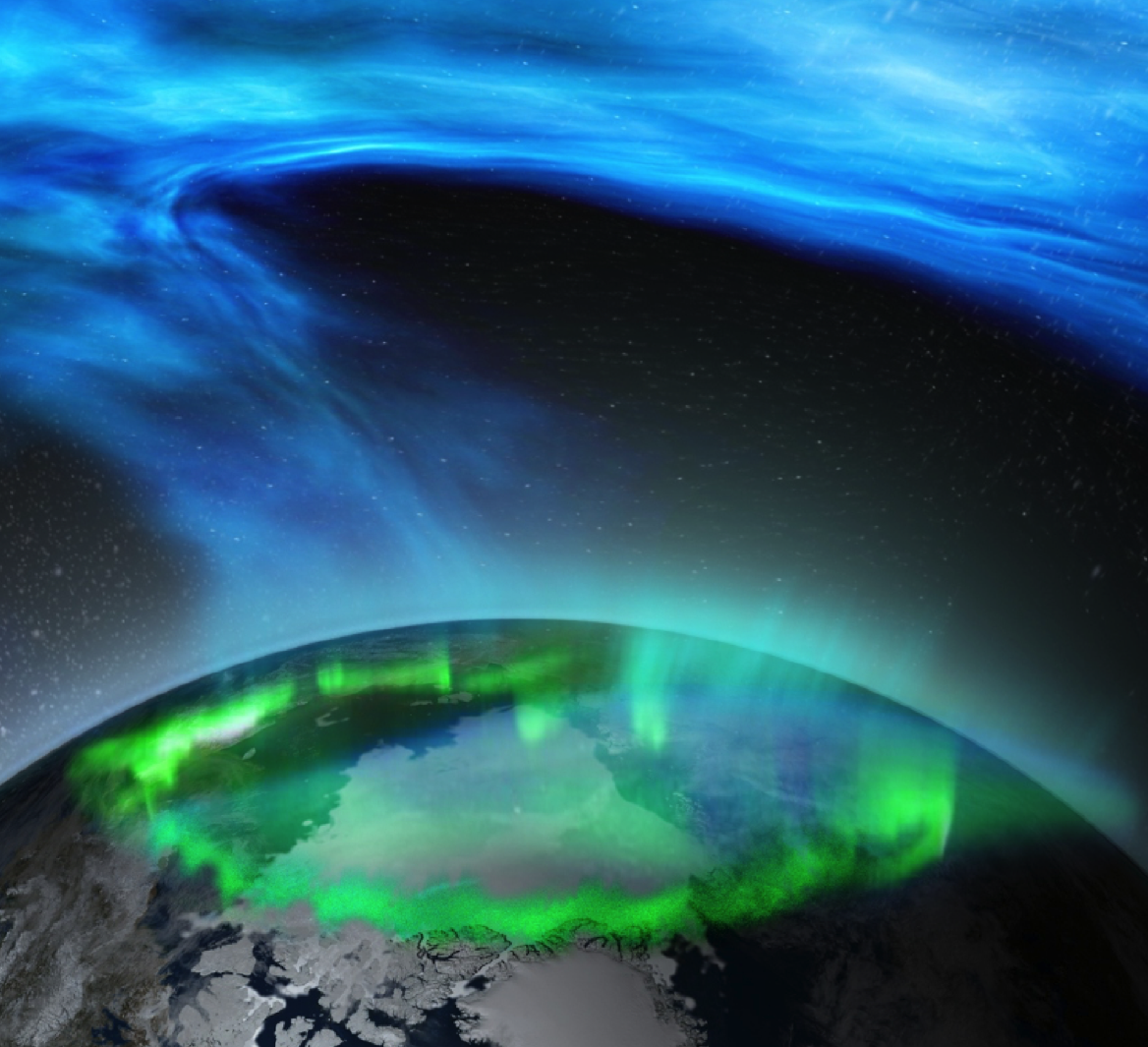
Ionospheric Outflow
The polar wind is a flow of plasma from the ionosphere into the magnetosphere along open magnetic field lines centered around the Earth’s magnetic poles. This flow is challenging to describe theoretically, because it involves several inter-connected physical regimes. By the time it reaches the magnetosphere, the plasma dynamics changes from chemical dominance to diffusion dominance, from collisional to collision-less, and from a subsonic to supersonic transport. The polar wind can upwardly transport several types of ions and these have been detected by spacecraft exploring the magnetosphere. Light ions (H+ and He+) detected by spacecraft could have either a solar wind or an ionospheric origin. However, the presence of heavy ions in the magnetosphere is predominantly linked with outflow from the ionosphere. Therefore, tracking the heavy ions may provide clues about the outflow process and its role in controlling the coupled magnetosphere-ionosphere system. While the light ion outflow can be largely explained by classical polar wind processes, the outflow of heavy ions, such as O+ and N+, is more complicated and not yet known, since they are gravitationally bound and require additional energy to overcome Earth's gravitational potential.
Current research efforts in Prof. Ilie’s group include the development of a new polar wind model, 7iPWOM, that improves on previous models and incorporates the important role of nitrogen in the overall chemical and plasma dynamics.
